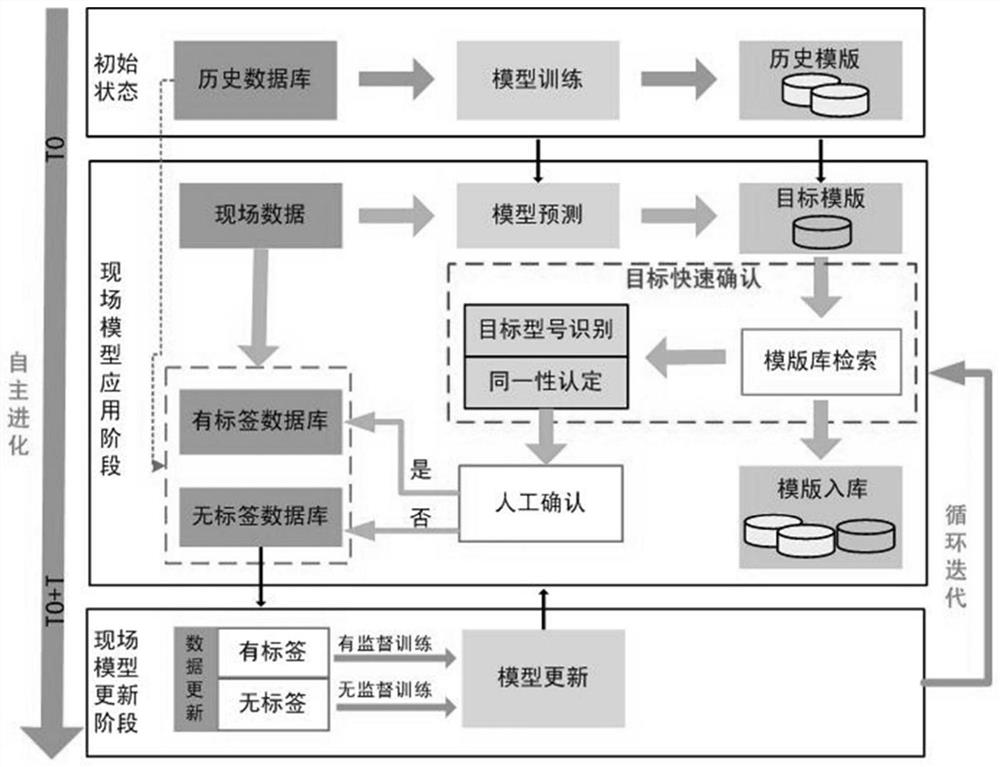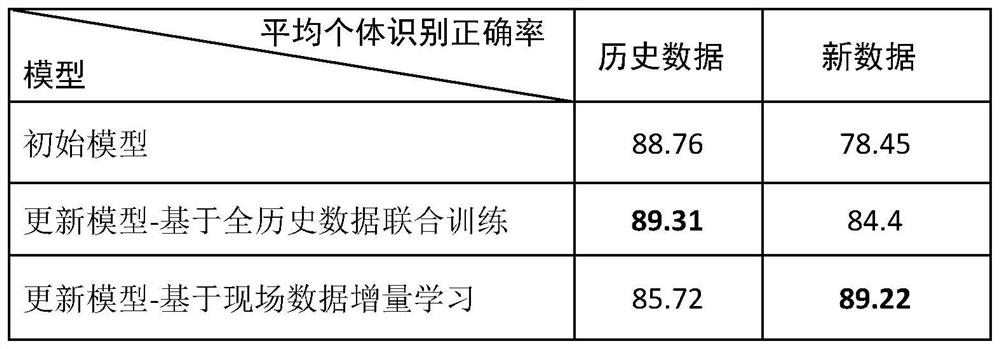Autonomous learning sonar target individual identification method
A technology of self-learning and recognition methods, applied in character and pattern recognition, sound wave re-radiation, instruments, etc., can solve the problems of low data quality, insufficient model generalization ability, and few data samples, etc., and achieve fast update speed, Good individual recognition performance, the effect of occupying less computing resources
- Summary
- Abstract
- Description
- Claims
- Application Information
AI Technical Summary
Problems solved by technology
Method used
Image
Examples
Embodiment 1
[0023] Figure 1 Is the work flow chart of the embodiment of the invention. reference Figure 1 , an autonomous learning sonar target individual recognition method, which includes the following five steps.
[0024] (1) Model acquisition steps: build an individual recognition network model for sonar target, train the model with historical sonar target database, and obtain the initial model.
[0025](2) Construction steps of template library: use the initial model to extract the corresponding historical individual feature template from the historical sonar target data, and construct the template library.
[0026] (3) Template matching step: for each current sonar data obtained, use the initial model to extract the current individual feature template corresponding to the current sonar data, and search and match in the template library to obtain the target individual recognition result.
[0027] (4) In the data updating step, the current individual feature template is stored in the tem...
Embodiment 2
[0052] (1) Acquiring a historical sonar target database, the historical sonar target database includes N historical sonar target data, each historical sonar target data includes historical sonar data and corresponding individual labels, and preprocessing each historical sonar data to generate a target spectrum (LOFAR spectrum, demon spectrum or power spectrum); The individual recognition network model based on the perception RESNET model is constructed. The historical target spectrum and individual label corresponding to the historical sonar data are used as the target input and target output of the individual recognition network model respectively. The individual recognition network model is trained. After the individual recognition model converges, the trained model y is obtained and used as the initial model. It should be noted here that although the output of the individual identification network model is the individual label, the feature template extracted in the subsequent o...
PUM
 Login to View More
Login to View More Abstract
Description
Claims
Application Information
 Login to View More
Login to View More - R&D
- Intellectual Property
- Life Sciences
- Materials
- Tech Scout
- Unparalleled Data Quality
- Higher Quality Content
- 60% Fewer Hallucinations
Browse by: Latest US Patents, China's latest patents, Technical Efficacy Thesaurus, Application Domain, Technology Topic, Popular Technical Reports.
© 2025 PatSnap. All rights reserved.Legal|Privacy policy|Modern Slavery Act Transparency Statement|Sitemap|About US| Contact US: help@patsnap.com



